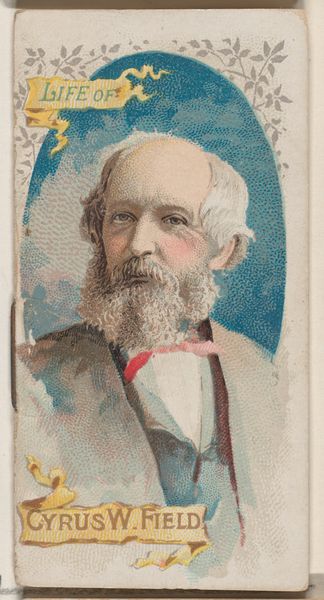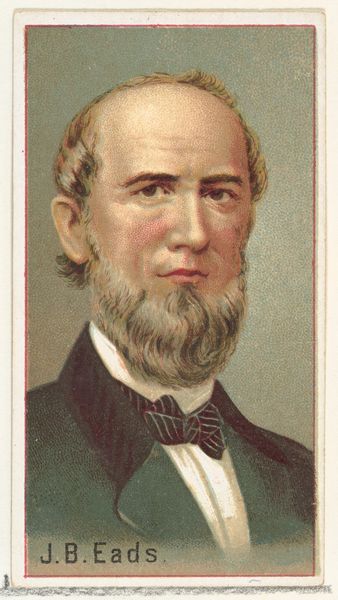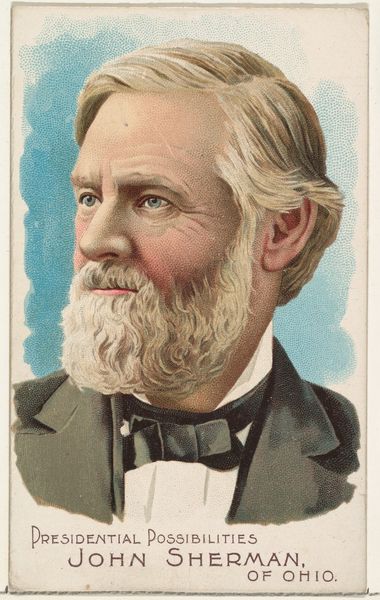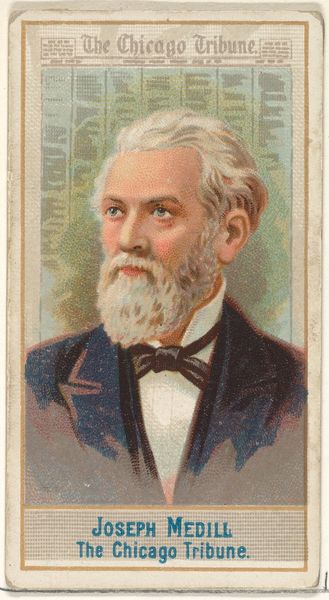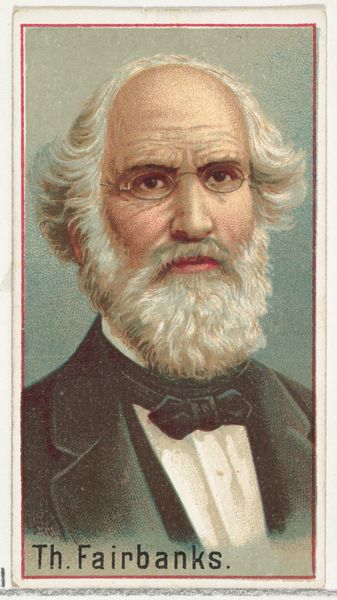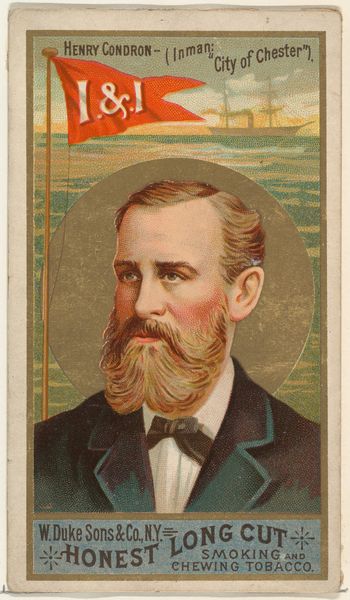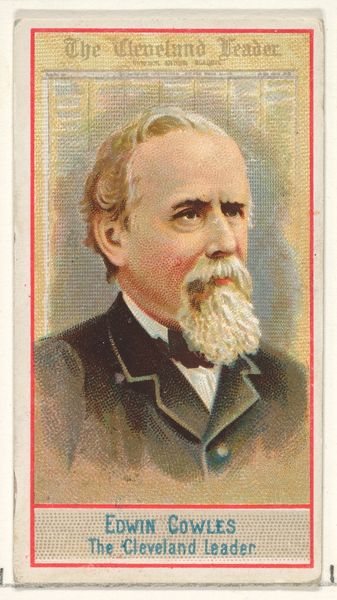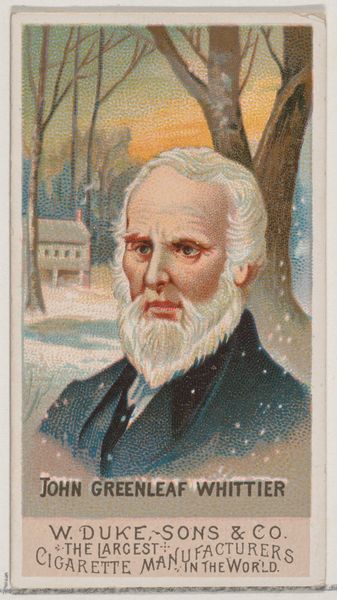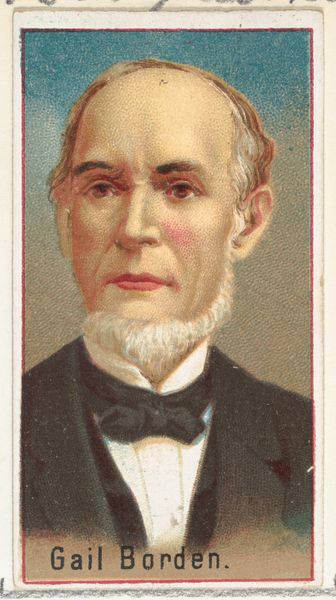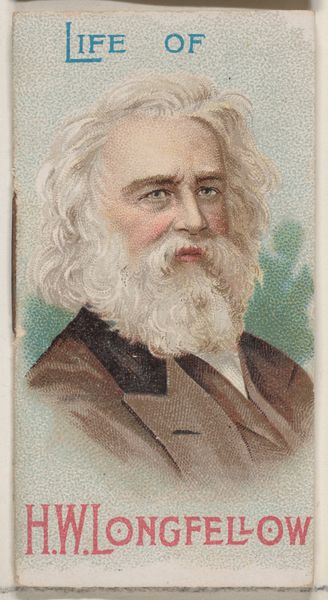
Life of James Buchanan Eads, from the Histories of Poor Boys and Famous People series of booklets (N79) for Duke brand cigarettes 1888
0:00
0:00
drawing, graphic-art, lithograph, print
#
portrait
#
drawing
#
graphic-art
#
art-nouveau
#
16_19th-century
#
lithograph
# print
#
caricature
Dimensions: Overall (Booklet closed): 2 3/4 × 1 1/2 in. (7 × 3.8 cm) Overall (Booklet open): 2 3/4 × 2 7/8 in. (7 × 7.3 cm)
Copyright: Public Domain
From around 1870-1920, W. Duke, Sons & Co. created this small booklet using an illustrative style typical of the period. It uses lithography, a method that allows for precise lines and flat areas of colour, crucial for mass production. Notice how the composition is structured around a central portrait, framed by text and decorative elements. The artist uses contrasting colours to draw the eye, with the darker reds of the curtain backdrop setting off the cooler tones of Eads' suit and the ornamentation below. This juxtaposition isn't merely decorative; it sets up a visual hierarchy emphasizing Eads himself as the focal point of attention. The booklet functions as a sign, embedding cultural values. The narrative of upward mobility implied in the series title 'Histories of Poor Boys and Famous People' is reinforced through the formal elements of portraiture and framing, suggesting a celebration of individual achievement. This carefully constructed image challenges fixed social categories, promoting a vision of accessible success.
Comments
No comments
Be the first to comment and join the conversation on the ultimate creative platform.
